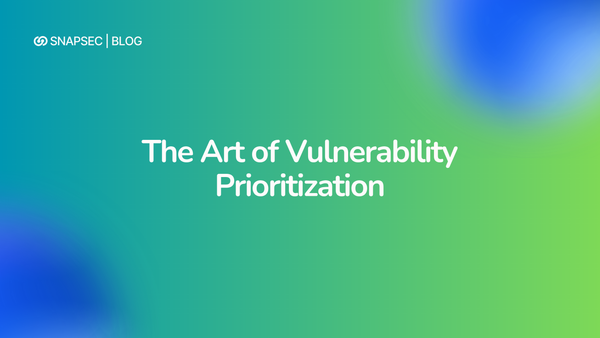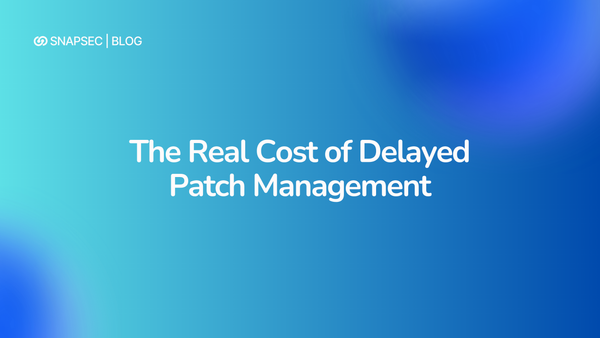Vulnerability Management : Where to Start & What to Measure

Security teams rarely grow in a straight line. One quarter you’re a one-person army juggling tickets, alerts, and patch cycles… and suddenly you’ve got three new hires, a bigger attack surface, and a backlog of findings older than your interns.
Scaling a VM program isn’t about hiring more people — it’s about building the right foundations and measuring the right things. This guide gives you a practical roadmap: where to start, what to prioritize, and which metrics actually matter.
1. Start With an Honest Inventory (Not a Perfect One)
You can’t secure what you can’t see — but most teams try to “boil the ocean” on day one. Don’t.
Focus on these first:
- Internet-facing systems
- High-value assets (HVA): authentication, payment, identity, customer data stores
- Any asset hosting critical business workflows
Why this matters:
Attackers don’t need your full inventory. They need one exposed entry point. Start with the surfaces that truly expand your risk.
2. Normalize Your Vulnerability Intake
Growing teams drown not because volume increases but because input streams stay chaotic.
Get all findings into one format and one system.
Whether your sources are scanners, pen-tests, cloud CSPMs, or bug bounty submissions; normalize them.
Minimum standard for each vulnerability record:
- Asset
- Vulnerability identifier (CVE when possible)
- Severity baseline (CVSS)
- Exploitability data
- Business context (service importance)
- Recommended remediation
- Changelog
Uniform data = faster decision-making.
3. Move From Severity-Driven to Risk-Driven Prioritization
As teams grow, this is the most important mindset shift.
CVSS alone is not strategy.
“Critical” does not mean “urgent.”
And “high” does not mean “dangerous.”
Risk = Severity × Exploitability × Asset value × Exposure
The strongest programs weigh:
- EPSS (Exploit Prediction Scoring System)
- Real-world threat intel (active exploits, PoCs, malware use)
- Attack path context
- Asset business importance
Growing teams need this shift early, or they’ll scale chaos, not capability.
4. Build a Repeatable Remediation Workflow
People can only work fast if the process allows them to.
Create a simple, predictable flow for every new finding:
- Ingest (finding enters your system)
- Tag & classify
- Prioritize (risk scoring)
- Assign to owners
- Set SLA based on risk
- Track remediation
- Verify & close
This is how you keep velocity high without drowning in escalations and “urgent” Slack pings.
5. Don’t Start With Dashboards Start With Leading Indicators
Security leaders often jump straight into building dashboards, but dashboards only show what happened.
Growing teams need metrics that show whether things are improving.
The Metrics That Actually Matter
A. Asset Coverage
Are we even scanning the things that matter?
Track:
- % of internet-facing assets scanned
- % of critical/HVA assets scanned
- Frequency of scans per asset class
Bad coverage = guaranteed blind spots.
B. Time to Prioritize (TTP)
How long does it take to decide what to fix?
Fast-growing teams need this under control early.
If prioritization takes weeks, patching can never catch up.
C. Patch / Fix Velocity
Your operational muscle.
Examples:
- Median time to remediate exploitable vulns
- SLA adherence (critical/high/medium)
- Reopen rate (poor fixes)
Velocity is more important than volume.
D. Exposure Window
How long is a critical asset exposed from detection → remediation?
This is the metric attackers care about.
And boards understand it instantly.
E. Backlog Growth Rate
A growing team should see their backlog stabilizing.
If it keeps rising, your program isn’t scaling.
6. Introduce Automation When the Process Is Ready — Not Before
The common mistake growing teams make:
They buy tools before they fix workflows.
Automation only multiplies what already exists.
If the current workflow is messy, automation will scale the mess.
Start automating once:
- Asset inventory is defined
- Prioritization logic is consistent
- Remediation SLAs exist
- Ownership is clear
Then automate:
- Discovery
- Prioritization
- Ticket creation
- Recurring scans
- Reporting
Your team will feel twice as big.
7. Create Ownership Early Or Bottlenecks Will Destroy You
Growing teams hit friction when security “finds” issues but no one owns fixing them.
Define ownership per asset class:
- Cloud teams own cloud vulns
- Backend teams own service vulns
- IT owns endpoint vulns
- Security owns prioritization + validation
Clear lines = fewer arguments, less finger-pointing, and faster fixes.
8. Build the Right Culture: Curiosity > Compliance
A growing VM team succeeds not because they follow rules — but because they ask the right questions.
Encourage:
- Engineers who challenge prioritization
- Analysts who question scanner outputs
- Security members who dig into exploit data
Curiosity leads to better decisions.
Compliance leads to stale dashboards.
Final Takeaway
Growing a vulnerability management function isn’t about “doing more scans” or “fixing more issues.”
It’s about:
- Getting visibility
- Simplifying workflows
- Focusing on risk
- Tracking the right metrics
- Automating when ready
- Creating ownership
- Strengthening culture
Do this right, and your small team starts operating like a mature security function without drowning in noise or burning out your engineers.
Where Platforms Like Snapsec Suite Fit In
As teams grow, the biggest challenge isn’t “finding vulnerabilities” it’s keeping the entire process consistent.
Instead of juggling five tools, Snapsec lets teams do things the scalable way:
- Automatic asset discovery (so your coverage actually grows with your company)
- Unified vulnerability intake from scanners, cloud, pen-tests, and bug bounty
- Risk-based prioritization mixing CVSS, exploit data, and business context
- Actionable workflows that create tickets, assign owners, and track SLAs
- Dashboards that show exposure, backlog, and fix velocity without manual spreadsheet work

Centralise your Appsec
A single dashboard for visibility, collaboration, and control across your AppSec lifecycle.
Explore Live Demo



